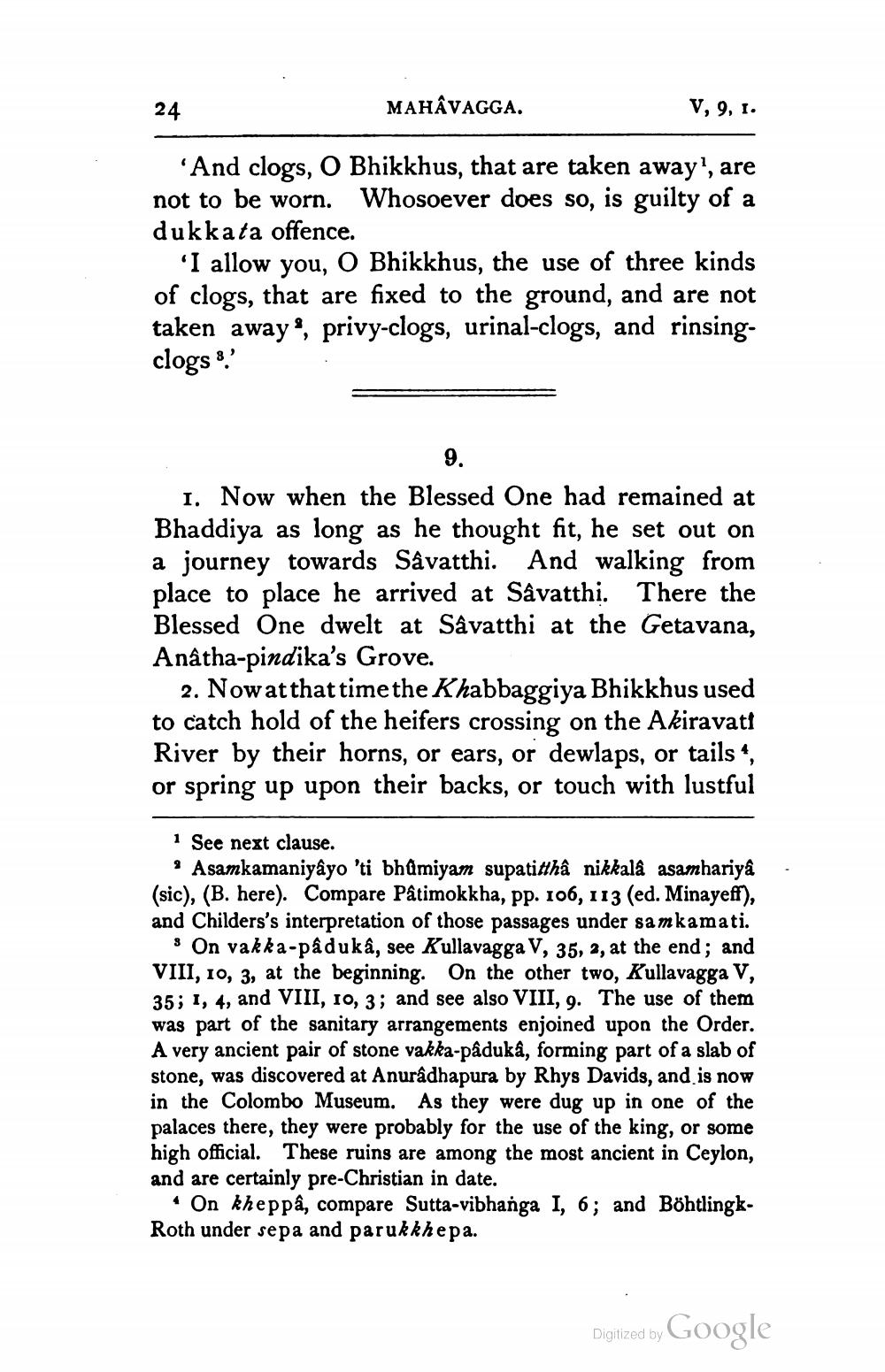________________
24
MAHÂVAGGA.
V, 9, 1.
'And clogs, O Bhikkhus, that are taken away', are not to be worn. Whosoever does so, is guilty of a dukkata offence.
'I allow you, O Bhikkhus, the use of three kinds of clogs, that are fixed to the ground, and are not taken away", privy-clogs, urinal-clogs, and rinsingclogs 8.
9.
1. Now when the Blessed One had remained at Bhaddiya as long as he thought fit, he set out on a journey towards Sâvatthi. And walking from place to place he arrived at Sâvatthi. There the Blessed One dwelt at Sâvatthi at the Getavana, Anâtha-pindika's Grove.
2. Nowatthat time the Khabbaggiya Bhikkhus used to catch hold of the heifers crossing on the Akiravati River by their horns, or ears, or dewlaps, or tails, or spring up upon their backs, or touch with lustful
1 See next clause.
Asamkamaniyâyo 'ti bhūmiyam supatitthâ nikkala asamhariya (sic), (B. here). Compare Pâtimokkha, pp. 106, 113 (ed. Minayeff), and Childers's interpretation of those passages under samkamati.
: On vakka-pâduka, see Kullavagga V, 35, 2, at the end; and VIII, 10, 3, at the beginning. On the other two, Kullavagga V, 35; 1, 4, and VIII, 10, 3; and see also VIII, 9. The use of them was part of the sanitary arrangements enjoined upon the Order. A very ancient pair of stone vakka-pâduka, forming part of a slab of stone, was discovered at Anuradhapura by Rhys Davids, and is now in the Colombo Museum. As they were dug up in one of the palaces there, they were probably for the use of the king, or some high official. These ruins are among the most ancient in Ceylon, and are certainly pre-Christian in date.
"On kheppâ, compare Sutta-vibhanga I, 6; and BöhtlingkRoth under sepa and parukkhepa.
Digitized by
Digitized by Google




